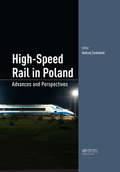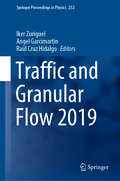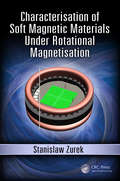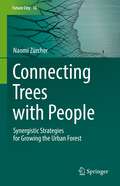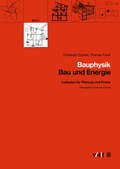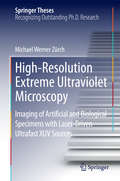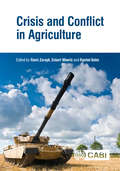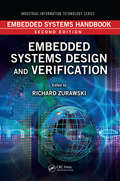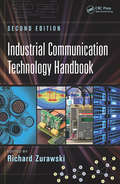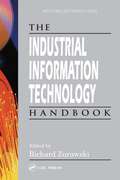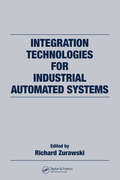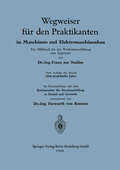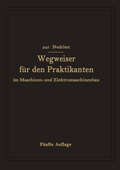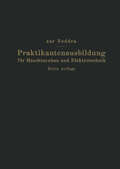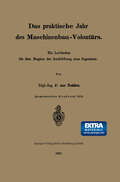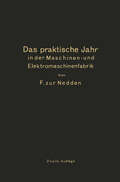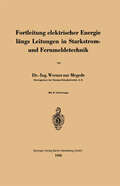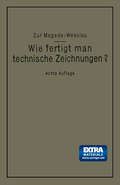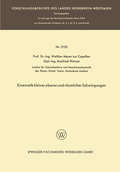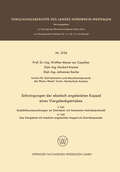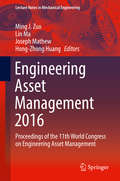- Table View
- List View
High-Speed Rail in Poland: Advances and Perspectives
by Andrzej ZurkowskiThe Railway Research Institute (Instytut Kolejnictwa) in Warsaw was established in 1951 and was, until 2000, part of the Polish State Railways (PKP). At present, it serves as an independent entity, it is subordinated to the minister responsible for transport. Since its inception, the Institute has been the centre of competence for technology, technique and organization of operation and services in rail transport, particularly in respect to innovation. One of its fundamental tasks also includes activities connected with safety which are carried out in close cooperation with the National Safety Authority, i.e. the Office of Rail Transport. At the same time the Institute participated in the process of upgrading and modernization of the rail network in Poland. Experience in high speed rail, gained as a result of international cooperation and basing on the effort to increase speed on railway lines in Poland (so far 200 km/h), is included in the monograph “Koleje Dużych Prędkości w Polsce” (High Speed Rail in Poland) published in 2015 for the benefit of the Polish reader. This monograph aims at reaching an international audience of experts so as to present Polish determinants of HSR implementation. In order to elaborate this monograph, apart from specialists from the Railway Research Institute, experts from other research and academic centres were invited. Not only presenting a wide range of problems connected with future construction of High Speed Lines in Polish conditions, but also a number of operational ones. The authors have created a reference work of universal character, solving problems in order to build and operate high speed rail systems in countries on a similar level of development as Poland. Features: providing requirements for design and upgrade of engineering works on High Speed Rail development information on restructuring and building railway lines for countries starting to develop a High Speed Rail system dealing with organizational, engineering, socioeconomic and economic demands for transport services and the formation of human resources for constructing and operting a High Speed Rails system. Presenting these problems on the international arena will facilitate future cooperation and application of world experience to create HSR in Poland and integrate the Polish HSR network into the international one.
Traffic and Granular Flow 2019 (Springer Proceedings in Physics #252)
by Iker Zuriguel Angel Garcimartín Raúl Cruz HidalgoThis book gathers contributions on a variety of flowing collective systems. While primarily focusing on pedestrian dynamics, they also reflect the latest developments in areas such as vehicular traffic and granular flows and address related emerging topics such as self-propelled particles, data transport, swarm behavior, intercellular transport, and collective dynamics of biological systems. Combining fundamental research and practical applications in the various fields discussed, the book offers a valuable asset for researchers and practitioners alike.
Characterisation of Soft Magnetic Materials Under Rotational Magnetisation
by Stanislaw ZurekThe book presents practical aspects related to the measurement of rotational power loss in soft magnetic materials. The book furthermore focuses on practical aspects of performing such measurements, the associated difficulties as well as solutions to the most common problems. Numerous practical aspects, hands-on experience, and most commonly encountered pitfalls are heavily discussed in the book. The text begins with introduction to magnetism, then follows with definitions of measurement methods of rotational power loss from physical viewpoint. Two chapters describe and detail the various sensors which can be employed for such measurements as well as all the aspects of designing, making, and using a magnetising apparatus. A synthesis of the likely optimal design of a magnetising apparatus is also given, preceded with the full reasoning based on all the research carried out to date. Characterisation of Soft Magnetic Materials Under Rotational Magnetisation serves as an excellent starting point for any student having to perform magnetic measurements under rotational magnetisation, but also under 1D, 2D or 3D excitation. Because the methods, sensors, and apparatus are extensively discussed it will also be a great reference for more senior researchers and experts in the field. There is a whole chapter devoted to analysis of measurement uncertainty. This subject is rarely published for magnetic measurements, which makes it more difficult for all researchers to understand the concepts and methodology used in uncertainty estimation. This chapter not only introduces the whole subject, but also provides multiple step-by-step examples which can be easily followed, from very simple cases to much more complex ones. All equations are presented with full SI units which greatly helps in practical application of the presented methodology. Each chapter is written in such a way that it can be studied on its own, so that the reader can focus only on the specific aspects, as required.
Characterisation of Soft Magnetic Materials Under Rotational Magnetisation
by Stanislaw ZurekThe book presents practical aspects related to the measurement of rotational power loss in soft magnetic materials. The book furthermore focuses on practical aspects of performing such measurements, the associated difficulties as well as solutions to the most common problems. Numerous practical aspects, hands-on experience, and most commonly encountered pitfalls are heavily discussed in the book. The text begins with introduction to magnetism, then follows with definitions of measurement methods of rotational power loss from physical viewpoint. Two chapters describe and detail the various sensors which can be employed for such measurements as well as all the aspects of designing, making, and using a magnetising apparatus. A synthesis of the likely optimal design of a magnetising apparatus is also given, preceded with the full reasoning based on all the research carried out to date. Characterisation of Soft Magnetic Materials Under Rotational Magnetisation serves as an excellent starting point for any student having to perform magnetic measurements under rotational magnetisation, but also under 1D, 2D or 3D excitation. Because the methods, sensors, and apparatus are extensively discussed it will also be a great reference for more senior researchers and experts in the field. There is a whole chapter devoted to analysis of measurement uncertainty. This subject is rarely published for magnetic measurements, which makes it more difficult for all researchers to understand the concepts and methodology used in uncertainty estimation. This chapter not only introduces the whole subject, but also provides multiple step-by-step examples which can be easily followed, from very simple cases to much more complex ones. All equations are presented with full SI units which greatly helps in practical application of the presented methodology. Each chapter is written in such a way that it can be studied on its own, so that the reader can focus only on the specific aspects, as required.
Connecting Trees with People: Synergistic Strategies for Growing the Urban Forest (Future City #16)
by Naomi ZürcherWritten from the perspective of an urban forester and certified arborist, the reader will have a basic understanding of what makes a tree a tree in context to the philosophical and cultural underpinnings of Urban and Community Forestry, and learn how to implement model, time-tested global green practices and initiatives derived from citizen science.
High-Resolution Extreme Ultraviolet Microscopy: Imaging of Artificial and Biological Specimens with Laser-Driven Ultrafast XUV Sources (Springer Theses)
by Michael Werner ZürchThis thesis describes novel approaches and implementation of high-resolution microscopy in the extreme ultraviolet light regime. Using coherent ultrafast laser-generated short wavelength radiation for illuminating samples allows imaging beyond the resolution of visible-light microscopes. Michael Zürch gives a comprehensive overview of the fundamentals and techniques involved, starting from the laser-based frequency conversion scheme and its technical implementation as well as general considerations of diffraction-based imaging at nanoscopic spatial resolution. Experiments on digital in-line holography and coherent diffraction imaging of artificial and biologic specimens are demonstrated and discussed in this book. In the field of biologic imaging, a novel award-winning cell classification scheme and its first experimental application for identifying breast cancer cells are introduced. Finally, this book presents a newly developed technique of generating structured illumination by means of so-called optical vortex beams in the extreme ultraviolet regime and proposes its general usability for super-resolution imaging.
Crisis and Conflict in Agriculture
by Rami Zurayk Eckart Woertz Rachel BahnThis book discusses the causes and effects of crisis and conflict within an agricultural and rural context. It explores issues such as competition over resources, and looks at how crisis and conflict impact upon developing country agriculture for both the physical and human agricultural landscape. It reviews crises stemming from politically-driven violence, natural disasters and climate change. Exploring the relationship between agriculture and conflicts and crises before, during and after crisis periods, this book: - Evaluates controversial issues such as land-grabs and the growing of illegal crops; - Covers methodological approaches including GIS-based studies, ethnographic studies and the blending of methods; - Includes numerous case studies on developing countries within Asia, Latin America, Middle East-North Africa, and Sub-Saharan Africa. Providing detailed knowledge about the interactions of agriculture, conflict and crisis, this book aims to inform future policymaking for reconstruction and to foster resilience in the agricultural sector. An important resource for researchers of agricultural economics, development studies, sustainable agriculture and food security, it is also an illuminating read for students of these disciplines and agricultural extension workers.
Embedded Systems Handbook: Embedded Systems Design and Verification
by Richard ZurawskiConsidered a standard industry resource, the Embedded Systems Handbook provided researchers and technicians with the authoritative information needed to launch a wealth of diverse applications, including those in automotive electronics, industrial automated systems, and building automation and control. Now a new resource is required to report on current developments and provide a technical reference for those looking to move the field forward yet again. Divided into two volumes to accommodate this growth, the Embedded Systems Handbook, Second Edition presents a comprehensive view on this area of computer engineering with a currently appropriate emphasis on developments in networking and applications. Those experts directly involved in the creation and evolution of the ideas and technologies presented offer tutorials, research surveys, and technology overviews that explore cutting-edge developments and deployments and identify potential trends. This first self-contained volume of the handbook, Embedded Systems Design and Verification, is divided into three sections. It begins with a brief introduction to embedded systems design and verification. It then provides a comprehensive overview of embedded processors and various aspects of system-on-chip and FPGA, as well as solutions to design challenges. The final section explores power-aware embedded computing, design issues specific to secure embedded systems, and web services for embedded devices. Those interested in taking their work with embedded systems to the network level should complete their study with the second volume: Network Embedded Systems.
Embedded Systems Handbook: Embedded Systems Design and Verification
by Richard ZurawskiConsidered a standard industry resource, the Embedded Systems Handbook provided researchers and technicians with the authoritative information needed to launch a wealth of diverse applications, including those in automotive electronics, industrial automated systems, and building automation and control. Now a new resource is required to report on current developments and provide a technical reference for those looking to move the field forward yet again. Divided into two volumes to accommodate this growth, the Embedded Systems Handbook, Second Edition presents a comprehensive view on this area of computer engineering with a currently appropriate emphasis on developments in networking and applications. Those experts directly involved in the creation and evolution of the ideas and technologies presented offer tutorials, research surveys, and technology overviews that explore cutting-edge developments and deployments and identify potential trends. This first self-contained volume of the handbook, Embedded Systems Design and Verification, is divided into three sections. It begins with a brief introduction to embedded systems design and verification. It then provides a comprehensive overview of embedded processors and various aspects of system-on-chip and FPGA, as well as solutions to design challenges. The final section explores power-aware embedded computing, design issues specific to secure embedded systems, and web services for embedded devices. Those interested in taking their work with embedded systems to the network level should complete their study with the second volume: Network Embedded Systems.
Industrial Communication Technology Handbook (Industrial Information Technology #8)
by Richard ZurawskiFeaturing contributions from major technology vendors, industry consortia, and government and private research establishments, the Industrial Communication Technology Handbook, Second Edition provides comprehensive and authoritative coverage of wire- and wireless-based specialized communication networks used in plant and factory automation, automotive applications, avionics, building automation, energy and power systems, train applications, and more. New to the Second Edition: 46 brand-new chapters and 21 substantially revised chapters Inclusion of the latest, most significant developments in specialized communication technologies and systems Addition of new application domains for specialized networks The Industrial Communication Technology Handbook, Second Edition supplies readers with a thorough understanding of the application-specific requirements for communication services and their supporting technologies. It is useful to a broad spectrum of professionals involved in the conception, design, development, standardization, and use of specialized communication networks as well as academic institutions engaged in engineering education and vocational training.
Industrial Communication Technology Handbook (Industrial Information Technology)
by Richard ZurawskiFeaturing contributions from major technology vendors, industry consortia, and government and private research establishments, the Industrial Communication Technology Handbook, Second Edition provides comprehensive and authoritative coverage of wire- and wireless-based specialized communication networks used in plant and factory automation, automotive applications, avionics, building automation, energy and power systems, train applications, and more. New to the Second Edition: 46 brand-new chapters and 21 substantially revised chapters Inclusion of the latest, most significant developments in specialized communication technologies and systems Addition of new application domains for specialized networks The Industrial Communication Technology Handbook, Second Edition supplies readers with a thorough understanding of the application-specific requirements for communication services and their supporting technologies. It is useful to a broad spectrum of professionals involved in the conception, design, development, standardization, and use of specialized communication networks as well as academic institutions engaged in engineering education and vocational training.
The Industrial Information Technology Handbook (Industrial Electronics)
by Richard ZurawskiThe Industrial Information Technology Handbook focuses on existing and emerging industrial applications of IT, and on evolving trends that are driven by the needs of companies and by industry-led consortia and organizations. Emphasizing fast growing areas that have major impacts on industrial automation and enterprise integration, the Handbook covers topics such as industrial communication technology, sensors, and embedded systems.The book is organized into two parts. Part 1 presents material covering new and quickly evolving aspects of IT. Part 2 introduces cutting-edge areas of industrial IT. The Handbook presents material in the form of tutorials, surveys, and technology overviews, combining fundamentals and advanced issues, with articles grouped into sections for a cohesive and comprehensive presentation. The text contains 112 contributed reports by industry experts from government, companies at the forefront of development, and some of the most renowned academic and research institutions worldwide. Several of the reports on recent developments, actual deployments, and trends cover subject matter presented to the public for the first time.
Integration Technologies for Industrial Automated Systems (Industrial Information Technology)
by Richard ZurawskiIf there exists a single term that summarizes the key to success in modern industrial automation, the obvious choice would be integration. Integration is critical to aligning all levels of an industrial enterprise and to optimizing each stratum in the hierarchy. While many books focus on the technological components of enterprise information systems, Integration Technologies for Industrial Automated Systems is the first book to present a comprehensive picture of the technologies, methodologies, and knowledge used to integrate seamlessly the various technologies underlying modern industrial automation and information systems.In chapters drawn from two of Zurawski's popular works, The Industrial Communication Technology Handbook and The Industrial Information Technology Handbook, this practical guide offers tutorials, surveys, and technology overviews contributed by experts from leading industrial and research institutions from around the world. The book is organized into sections for cohesive and comprehensive treatment. It examines e-technologies, software and IT technologies, communication network-based technologies, agent-based technologies, and security in detail as well as their role in the integration of industrial automated systems. For each of these areas, the contributors discuss emerging trends, novel solutions, and relevant standards.Charting the course toward more responsive and agile enterprise, Integration Technologies for Industrial Automated Systems gives you the tools to make better decisions and develop more integrated systems.
Integration Technologies for Industrial Automated Systems (Industrial Information Technology)
by Richard ZurawskiIf there exists a single term that summarizes the key to success in modern industrial automation, the obvious choice would be integration. Integration is critical to aligning all levels of an industrial enterprise and to optimizing each stratum in the hierarchy. While many books focus on the technological components of enterprise information systems, Integration Technologies for Industrial Automated Systems is the first book to present a comprehensive picture of the technologies, methodologies, and knowledge used to integrate seamlessly the various technologies underlying modern industrial automation and information systems.In chapters drawn from two of Zurawski's popular works, The Industrial Communication Technology Handbook and The Industrial Information Technology Handbook, this practical guide offers tutorials, surveys, and technology overviews contributed by experts from leading industrial and research institutions from around the world. The book is organized into sections for cohesive and comprehensive treatment. It examines e-technologies, software and IT technologies, communication network-based technologies, agent-based technologies, and security in detail as well as their role in the integration of industrial automated systems. For each of these areas, the contributors discuss emerging trends, novel solutions, and relevant standards.Charting the course toward more responsive and agile enterprise, Integration Technologies for Industrial Automated Systems gives you the tools to make better decisions and develop more integrated systems.
Wegweiser für den Praktikanten im Maschinen- und Elektromaschinenbau: Ein Hilfsbuch für die Werkstattausbildung zum Ingenieur
by Franz Zur Nedden Herwarth von RenesseDieser Buchtitel ist Teil des Digitalisierungsprojekts Springer Book Archives mit Publikationen, die seit den Anfängen des Verlags von 1842 erschienen sind. Der Verlag stellt mit diesem Archiv Quellen für die historische wie auch die disziplingeschichtliche Forschung zur Verfügung, die jeweils im historischen Kontext betrachtet werden müssen. Dieser Titel erschien in der Zeit vor 1945 und wird daher in seiner zeittypischen politisch-ideologischen Ausrichtung vom Verlag nicht beworben.
Wegweiser für den Praktikanten im Maschinen- und Elektromaschinenbau: Ein Hilfsbuch für die Werkstattausbildung zum Ingenieur
by Franz Zur Nedden Herwarth von RenesseDieser Buchtitel ist Teil des Digitalisierungsprojekts Springer Book Archives mit Publikationen, die seit den Anfängen des Verlags von 1842 erschienen sind. Der Verlag stellt mit diesem Archiv Quellen für die historische wie auch die disziplingeschichtliche Forschung zur Verfügung, die jeweils im historischen Kontext betrachtet werden müssen. Dieser Titel erschien in der Zeit vor 1945 und wird daher in seiner zeittypischen politisch-ideologischen Ausrichtung vom Verlag nicht beworben.
Praktikantenausbildung für Maschinenbau und Elektrotechnik: Ein Hilfsbuch für die Werkstattausbildung zum Ingenieur
by Franz Zur Nedden Herwarth von RenesseDieser Buchtitel ist Teil des Digitalisierungsprojekts Springer Book Archives mit Publikationen, die seit den Anfängen des Verlags von 1842 erschienen sind. Der Verlag stellt mit diesem Archiv Quellen für die historische wie auch die disziplingeschichtliche Forschung zur Verfügung, die jeweils im historischen Kontext betrachtet werden müssen. Dieser Titel erschien in der Zeit vor 1945 und wird daher in seiner zeittypischen politisch-ideologischen Ausrichtung vom Verlag nicht beworben.
Das praktische Jahr des Maschinenbau-Volontärs: Ein Leitfaden für den Beginn der Ausbildung zum Ingenieur
by Franz Zur NeddenDas praktische Jahr in der Maschinen- und Elektromaschinenfabrik: Ein Leitfaden für den Beginn der Ausbildung zum Ingenieur
by F. Zur NeddenDieser Buchtitel ist Teil des Digitalisierungsprojekts Springer Book Archives mit Publikationen, die seit den Anfängen des Verlags von 1842 erschienen sind. Der Verlag stellt mit diesem Archiv Quellen für die historische wie auch die disziplingeschichtliche Forschung zur Verfügung, die jeweils im historischen Kontext betrachtet werden müssen. Dieser Titel erschien in der Zeit vor 1945 und wird daher in seiner zeittypischen politisch-ideologischen Ausrichtung vom Verlag nicht beworben.
Fortleitung elektrischer Energie längs Leitungen in Starkstrom- und Fernmeldetechnik
by W. Zur MegedeWie fertigt man technische Zeichnungen?: Leitfaden zur Herstellung technischer Zeichnungen für Schule und Praxis mit besonderer Berücksichtigung des Bauzeichnens, des Maschinenzeichnens und des topographischen Zeichnens
by Alfred Zur Megede Max WesslauDieser Buchtitel ist Teil des Digitalisierungsprojekts Springer Book Archives mit Publikationen, die seit den Anfängen des Verlags von 1842 erschienen sind. Der Verlag stellt mit diesem Archiv Quellen für die historische wie auch die disziplingeschichtliche Forschung zur Verfügung, die jeweils im historischen Kontext betrachtet werden müssen. Dieser Titel erschien in der Zeit vor 1945 und wird daher in seiner zeittypischen politisch-ideologischen Ausrichtung vom Verlag nicht beworben.
Kinematik kleiner ebener und räumlicher Schwingungen (Forschungsberichte des Landes Nordrhein-Westfalen)
by Walther Meyer zur Capellen Manfred WernerSchwingungen der elastisch angelenkten Koppel eines Viergelenkgetriebes (Forschungsberichte des Landes Nordrhein-Westfalen)
by Walther Meyer zur Capellen Herbert Krumm Johannes SochaEngineering Asset Management 2016: Proceedings of the 11th World Congress on Engineering Asset Management (Lecture Notes in Mechanical Engineering)
by Ming J. Zuo Lin Ma Joseph Mathew Hong-Zhong HuangThese proceedings gather selected peer-reviewed papers from the 11th World Congress on Engineering Asset Management (WCEAM), which was held in Jiuzhaigou, China, on 25–28 July, 2016. These proceedings cover a wide range of topics in engineering asset management, including:· strategic asset management;· condition monitoring and diagnostics;· integrated intelligent maintenance;· sensors and devices;· information quality and management;· sustainability in asset management;· asset performance and knowledge management;· data mining and AI techniques in asset management;· engineering standards; and· education in engineering asset management.The breadth and depth of these state-of-the-art, comprehensive proceedings make them an excellent resource for asset management practitioners, researchers and academics, as well as undergraduate and postgraduate students.
